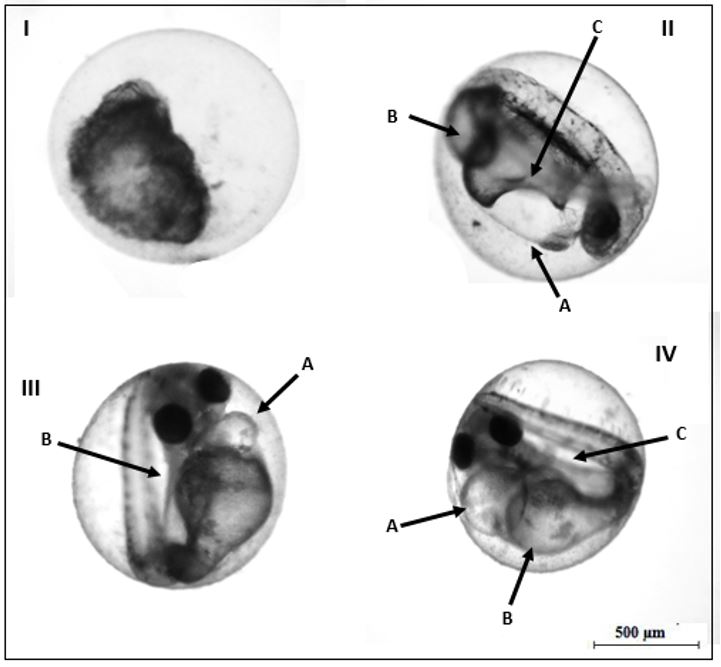Abstract
Bisphenol A (BPA) is a monomer used in the production of polycarbonate, a polymer commonly found in plastics, epoxy resins and thermal papers. The presence of BPA in food, water, air and dust has been of great concern in recent years not only due to environmental and ecological issues but also because of its supposed risk to public health related to its mutagenic and carcinogenic potential. In this study we evaluated the toxicity of bisphenol A in zebrafish embryos (Danio rerio) and determined the 50% lethal concentration (LC50) of this chemical. BPA was used at concentrations ranging from 1 μM to 100 μM in E3 medium/0.5% dimethylsulfoxide (DMSO) from previously prepared stock solutions in 100% DMSO. Controls included embryos exposed only to E3 medium or supplemented with 0.5% DMSO. Camptothecin (CPT), a known inhibitor of cell proliferation was used as positive control at a concentration of 0.001 μM in E3 medium/0.5% DMSO. Adults zebrafish were placed for breeding a day before the experimental set up, then, viable embryos were collected and selected for use. Experiments were carried out in triplicates, according to specifications from Organization for Economic Cooperation and Development (OECD). One embryo/well (25 embryos per concentration) was distributed in 96 well microplates in presence or absence of the chemicals. The plates were kept in BOD incubators with a controlled temperature of 28.5 ºC and with photoperiod of 14 h light:10 h dark. After 24h, 48h, 72h and 96h exposure, the exposed embryos were evaluated according to the following parameters: mortality, coagulation, rate of heartbeat, hatching and presence of morphological abnormalities. Photography was obtained by photomicroscopy. Apoptosis was evaluated by DNA ladder assay. DNA was extracted by phenol:chloroform method and analyzed by 2% agarose gel electrophoresis. DNA fragments were visualized after ethidium bromide staining in ultraviolet transilluminator. The LC50 determined for BPA was 70 μM after 24 hours, 72 μM after 48 hours, 47 μM after 72 hours and 31 μM after 96 hours exposure. BPA induced morphological and physiological alterations such as yolk sac and pericardial edema, hatching delay or inhibition, spine deformation, decreasing in heartbeat rate and mortality. In conclusion, this study demonstrated that BPA induced marked malformations in zebrafish embryos at concentrations above 25 μM corroborating the current concerns related to the widespread presence of BPA in the air, food and water used by humans as well as in the bodily fluids and tissues.
Keywords:
bisphenol; toxicity; embryogenesis

 Thumbnail
Thumbnail
 Thumbnail
Thumbnail
 Thumbnail
Thumbnail
 Thumbnail
Thumbnail
 Thumbnail
Thumbnail
 Thumbnail
Thumbnail
 Thumbnail
Thumbnail






